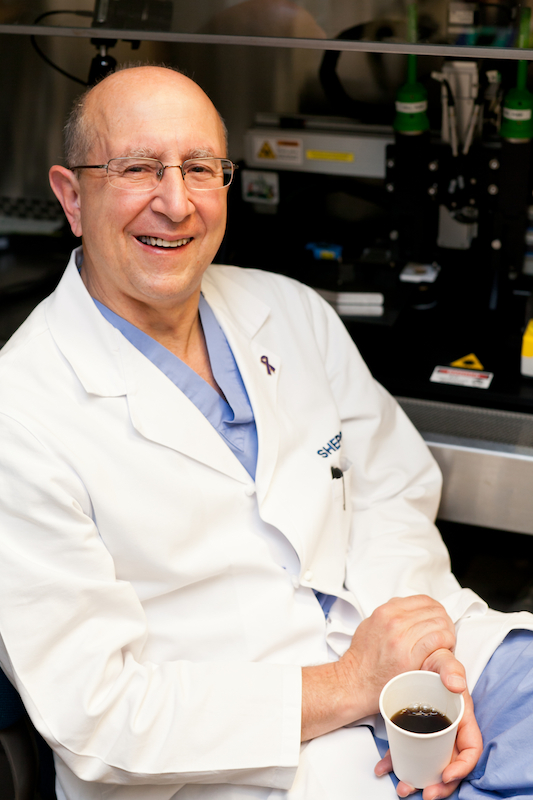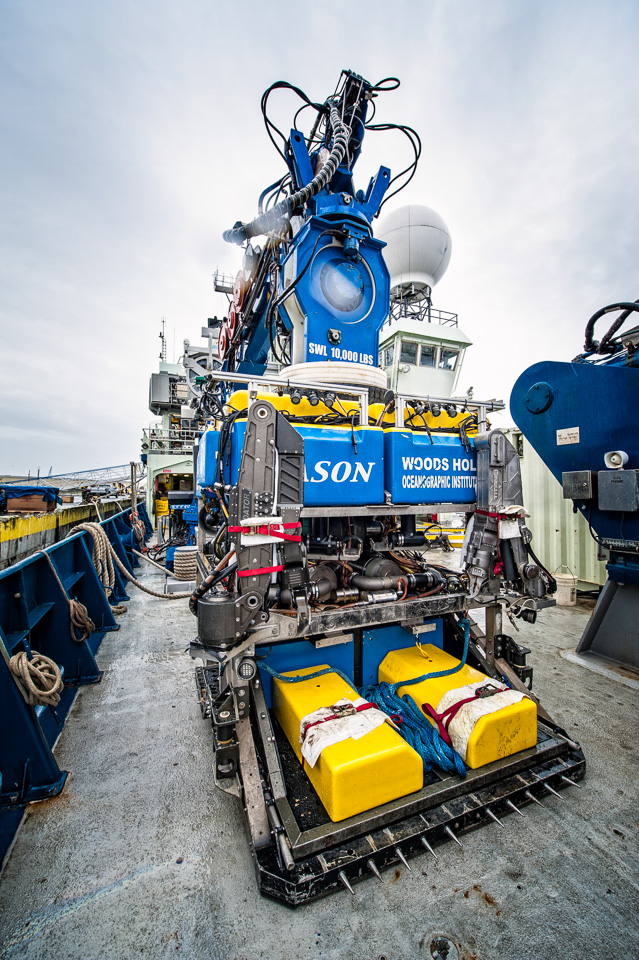Stealthily, swiftly and ruthlessly, pancreatic cancer operates a bit like the creature in the movie, Alien. It is difficult to detect, and hard to treat and surgically remove. It is the deadliest cancer in America, killing 95 percent of its victims. In a few years, it will overtake breast and colon cancers as America’s number one or number two cancer killer.
Dr. Brett Sheppard, professor and clinical vice-chairman of surgery at Oregon Health & Science University, gave 1859 access to ground zero in his war on cancer—the operating room, his research labs and wherever he finds an audience.
Why is pancreatic cancer on the rise and how do we avoid getting it?
Pancreatic cancer has been increasing about 1 percent yearly over many decades. About 44,000 Americans were diagnosed last year and about 40,000 perished. There are lifestyle changes we can make to help decrease our chances of developing this disease. Not smoking and avoiding secondhand cigarette smoke is critical. Smoke has a direct toxic effect on pancreatic cells. Use alcohol in moderation. Alcohol is the most common cause of pancreatitis in the United States, and patients with chronic pancreatitis have an increased risk of developing pancreatic cancer. This increased risk is somewhere between nine to fourteen times that of the general population.
Adopting a Mediterranean diet will likely decrease our risk of developing pancreatic cancer. Preliminary studies suggest compounds such as flavones and others in fruits and vegetables may help reduce the activation of some pathways that help contribute to cancer development. Omega-3 fish oils reduce inflammation and may help reduce the frequency of precursors to tumors. People who consume diets high in animal fat, especially red meat, have a higher propensity for developing pancreatic cancer.
Obesity is a risk factor for pancreatic cancer and when pancreatic cancer occurs in obese patients it tends to be more aggressive and lethal. Also, staying active with planned exercise appears to be helpful. Skeletal muscle is now believed to also be an organ that secretes hormones. Physical activity keeps this hormone function intact and helps reduce inflammation, helps insulin sensitivity and may help tumor defenses through yet unknown mechanisms.
Finally, a low dose of aspirin daily has been shown to decrease cancer risk in some important studies. I take one but always ask my patients to discuss this with their primary care physician before starting.
This cancer moves so fast. Former NFL great Gene Upshaw died just four days after his diagnosis. Are there really no substantive early warning signs?
Unfortunately there are no reliable early warning signs. Pancreatic cancer, if in the head of the pancreas, will often come to attention with the onset of jaundice perhaps associated with some fatigue and weight loss, while pancreatic cancer in the body or the tail of the pancreas is even more insidious and may not come to medical attention until the disease has already spread too far to be effectively treated.
Two warning signs can be helpful. I have had patients who came to our office after their gallbladder surgery did not relieve their symptoms, and further testing revealed pancreatic cancer. More common is the unexpected development of diabetes in people who are not really at risk for developing diabetes. The linkage of new onset diabetes and the development of pancreatic cancer is most profound within six months of the initial diagnosis of diabetes, but abnormalities in blood glucose control can occur up to three years before the diagnosis of clinical pancreatic cancer.
A pancreas protocol CT scan at the onset of diabetes—in patients with low risk to develop diabetes—may detect a pancreatic cancer at a treatable stage. Pancreatic cancer likely secretes factors that block the effect of our body’s normal insulin action. In fact, sometimes after removing a pancreatic cancer, even though a significant amount of pancreas is also removed, blood sugar control gets easier. So the development of diabetes in otherwise healthy patients who are not at risk for developing diabetes should at least make one pause and think about possible occult pancreatic cancer. The problem is that a lot of people become diabetic but only a few have pancreatic cancer. Sadly, even in my own extended family, I have seen this overlooked, and the diagnosis of pancreatic cancer languished until it was not curable.
You say detecting pancreatic cancer is like finding a drop of wine in a gallon of water, yet you believe we are about five years from an early screening tool.
We are working along several fronts to diagnosis pancreatic cancer when it is more potentially curable. This takes collaboration and teamwork from many different perspectives and disciplines.
We are just starting to work with Dynamic Contrast Enhanced MRI to evaluate high-risk groups for early signals. Using different techniques, we will hopefully be able to measure early changes in blood flow and chemical information to identify malignant cells much earlier than standard CT or MRI imaging. We are also looking at cell-free DNA that might be expressed in known potentially pre-malignant tumors to determine if we can predict which ones will become malignant.
Finally, with the development of the Center for Spatial Systems Biomedicine, we hope to be able to learn more about early markers of developing pancreatic cancer and capitalize on this knowledge to develop more precise molecular testing. The test would likely be first available only to higher-risk groups, so we can work out how accurate they are in an investigational model before they would be ready for the general population. Currently, the best way we have to diagnose pancreatic cancer early is to screen for this disease in high-risk groups.
Your team is experimenting with drugs that could bomb through that hard bunker and get to the disease. How close are you?
Pancreatic cancer often encases itself in a very hard shell of tissue. This shell, or “bunker“ is difficult to penetrate. In addition, the pressure inside this bunker is about the same as the patient’s own blood pressure, thus it is physically difficult to drive drugs and small-molecule therapy into this bunker. Inside the bunker lies the placenta for the growing pancreatic cancer. Here are cells that feed the tumor and send signals to other cells to come in and help feed the tumor, while others are manipulated to help fight our body’s own immune defenses.
We have come to understand now that there are several different types of pancreatic cancer cells within every patient’s tumor. Each cell type has different susceptibility to drugs and, probably, radiation. I believe this tumor cell heterogeneity is another major reason why pancreatic cancer is so hard to treat.
Ultimately, for every patient, we will need to understand their unique tumor cell populations. Our new 3-D bioprinter will help us investigate and develop novel therapeutics. For the first time, we will be able to construct multiple, small, 3-D models of pancreatic cancer with its placenta and bunker, and test new agents in a high throughput environment that more closely models the interactions that are going on inside of us.
If this technology fulfills its promise, then we will not have to test promising agents over many years, and we will not need to use animal models for this part of our research. In addition, I suspect in the not-too-distant future, we will be able to take an individual’s pancreatic tumor from the operating room, grow their own cells and test them
for sensitivity to drugs within the bio-printer. This will be a large step towards fulfilling the promise of personalized or precision therapy until we fully understand the genome of each population of cancer cells. This is incredibly exciting.
You’ve been slowly building one of the larger tumor data banks in the world. What are you finding?
Our patients with pancreatic cancer and their families are the bravest people I have ever had the honor to know. Most of them have heard about the poor chances with this disease and are eager to help conquer it any way they can. They are very giving and provide their permission for us to bank their tumors. The Oregon Pancreas Tumor Registry
(OPTR) is a bio-repository of our patient’s tumors, fluid and blood. This is a priceless resource. When each story is linked to encoded discreet bio samples, we can begin to determine what molecular markers we find will help predict outcomes and response to diverse therapies.
What is the best resource for learning more about pancreatic cancer and what can we each do?
The internet is both a blessing and a curse for pancreatic cancer patients and their families. There are sites out there that will try and capitalize on their fears and make claims that just are not true. There are, however, several reliable sites to obtain information from. As an overview, I would try pancreas.org. This provides information about pancreatic cancer and related topics, and has information for patients, physicians, scientists, and high school and college students. Other sites that are very good and focused on pancreatic cancer are the Lustgarten Foundation, the National Pancreas Foundation and the Pancreatic Cancer Action Network.
This seems personal to you, is it?
I have been locked in combat with pancreatic cancer for many years now, and I am not going to give up until it is vanquished. As a surgical resident, I began to develop a kinship with my patients when I saw so many of them taken to the operating room, only to be turned back by extensive local disease or metastatic disease. We did not have
much to offer people in the way of drugs, and it was difficult to watch so many people pass away. There was a lot of research for other tumors, and pancreatic cancer was an ‘orphan disease.’ I thought we could do
better, and that notion has been with me ever since.
To read an extended interview with Dr. Shepppard and two pancreatic cancer survivors, click here.










I had the Whipple surgery about 8 yrs. ago and except for weight lose and some pain I'm doing pretty good.